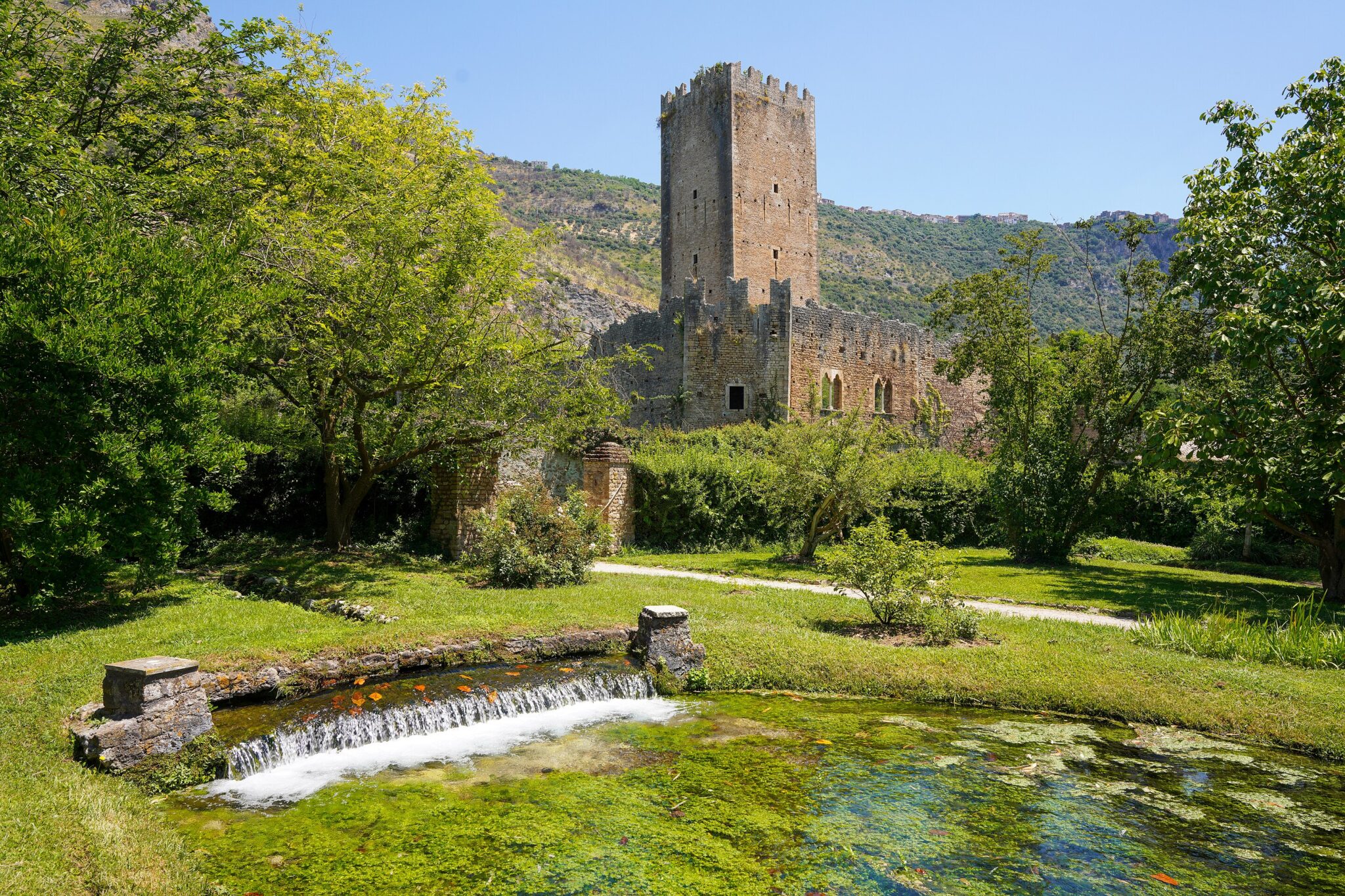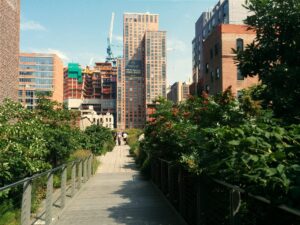A Garden Suspended Between Ruin and Bloom
The Giardino di Ninfa in Cisterna di Latina, just an hour south of Rome, feels like something out of a dream — a vision of stone ruins softened by moss, wisteria, and the sound of running water. Built on the remains of a medieval town and restored over generations by the Caetani family, Ninfa is often called “the most romantic garden in the world.”
It is a place where every crumbling arch tells a story, every flowering vine reclaims time, and where centuries of human ambition and loss have blended into a single, breathtaking landscape.
From Abandonment to Revival
Ninfa takes its name from the river that runs through it — a gentle current that winds past the ruins of a medieval citadel once thriving with life. In the 14th century, the noble Caetani family abandoned the town after waves of war and plague left it uninhabitable. For centuries, the area lay in ruins, slowly swallowed by marshland and wild growth.
When Prince Gelasio Caetani inherited the property in 1921, he saw not desolation but possibility. A politician, engineer, and passionate horticulturalist, Gelasio began planting among the ruins, envisioning a landscape where nature and architecture could coexist. His mother, Ada Bootle-Wilbraham, an English aristocrat and devoted gardener, installed many of the roses that still perfume the air — tea-scented climbers and delicate noisettes that spill over stone walls and crumbled towers.
Together, they began a transformation that would span generations. Later family members added flowering dogwoods, nineteen varieties of magnolia, and cascading wisterias in white, lilac, and blush pink.
As the garden grew, so did its myth — a place where Italian melancholy met English romanticism.
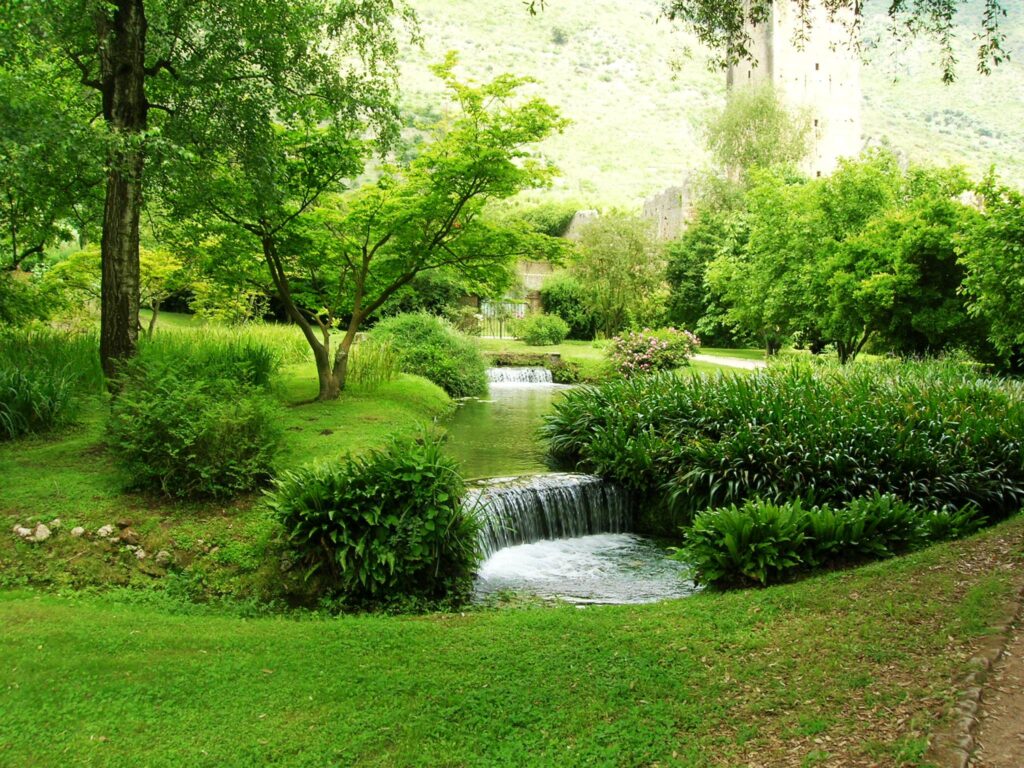
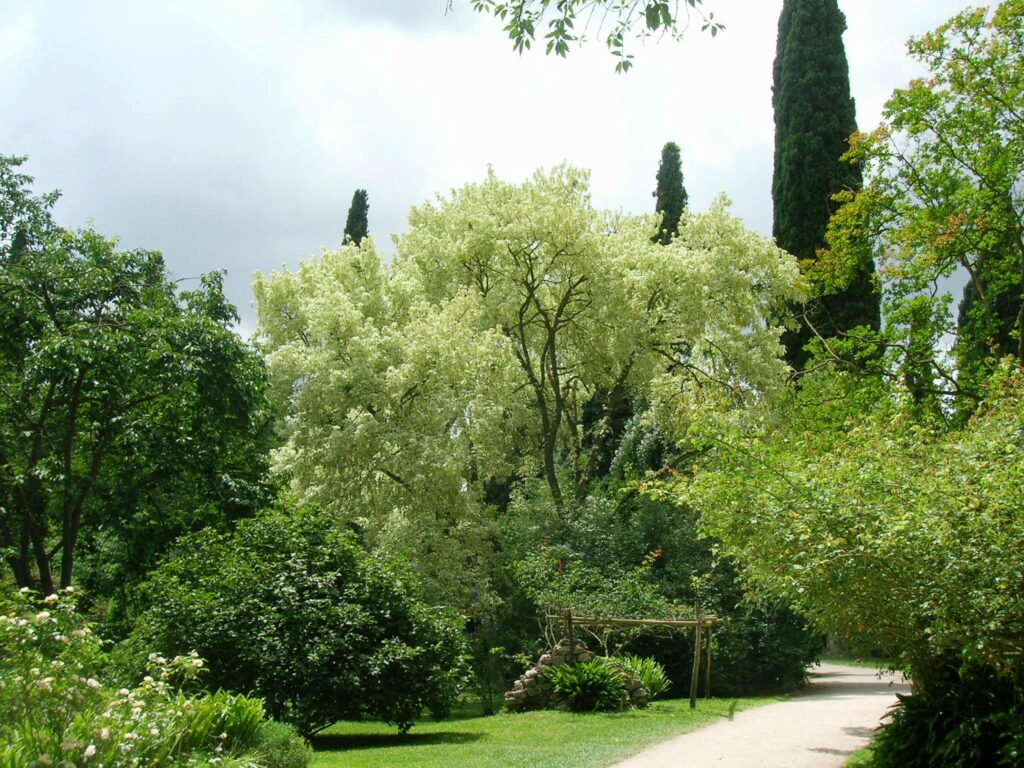
A Living Painting
Today, Ninfa covers nearly 20 acres of dense, interwoven plantings. Its proximity to the Ninfa River and the surrounding lake creates a microclimate that allows lush, temperate growth even through the hottest Italian summers.
Willows trail their branches in the water; Japanese maples and birches shimmer in dappled light; and wild irises bloom in the shadows of medieval ruins. Magnolias rise above crumbled stone chapels, and gunnera leaves spread like parasols over secret pools.
One of the garden’s great paradoxes is its balance between control and freedom. Paths wind naturally but deliberately; vines seem wild but are carefully tended. The late Lauro Marchetti, who served as head gardener until his retirement, famously said that Ninfa’s beauty lies in “the illusion of abandon — everything looks natural, but nothing is left to chance.”
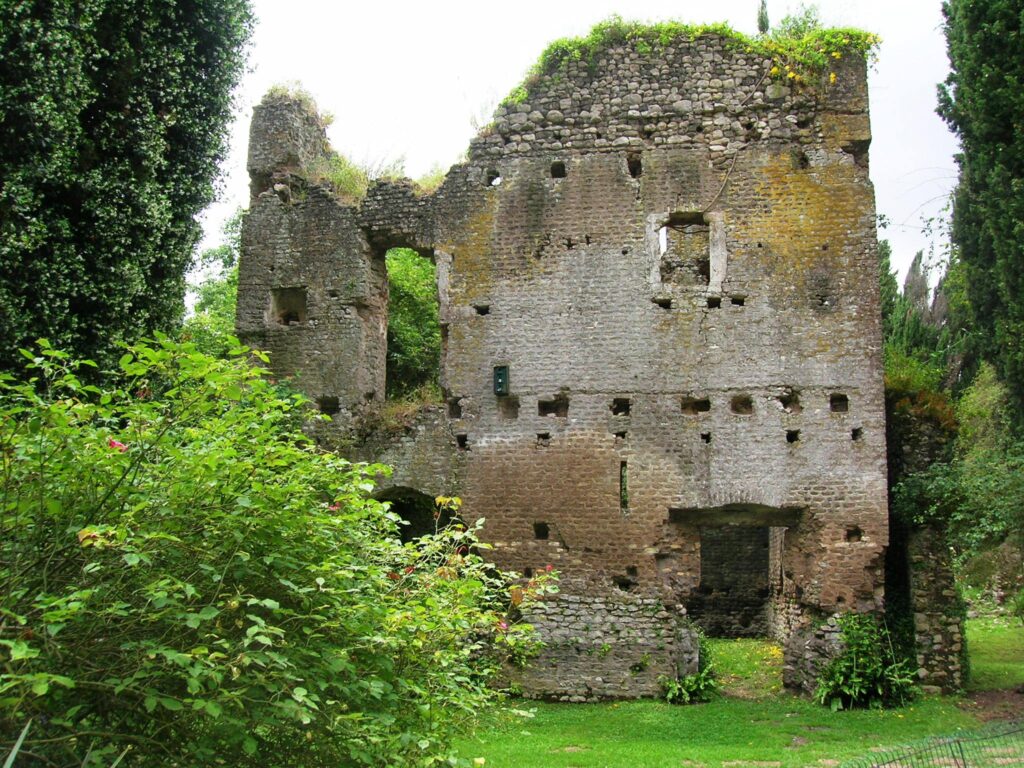
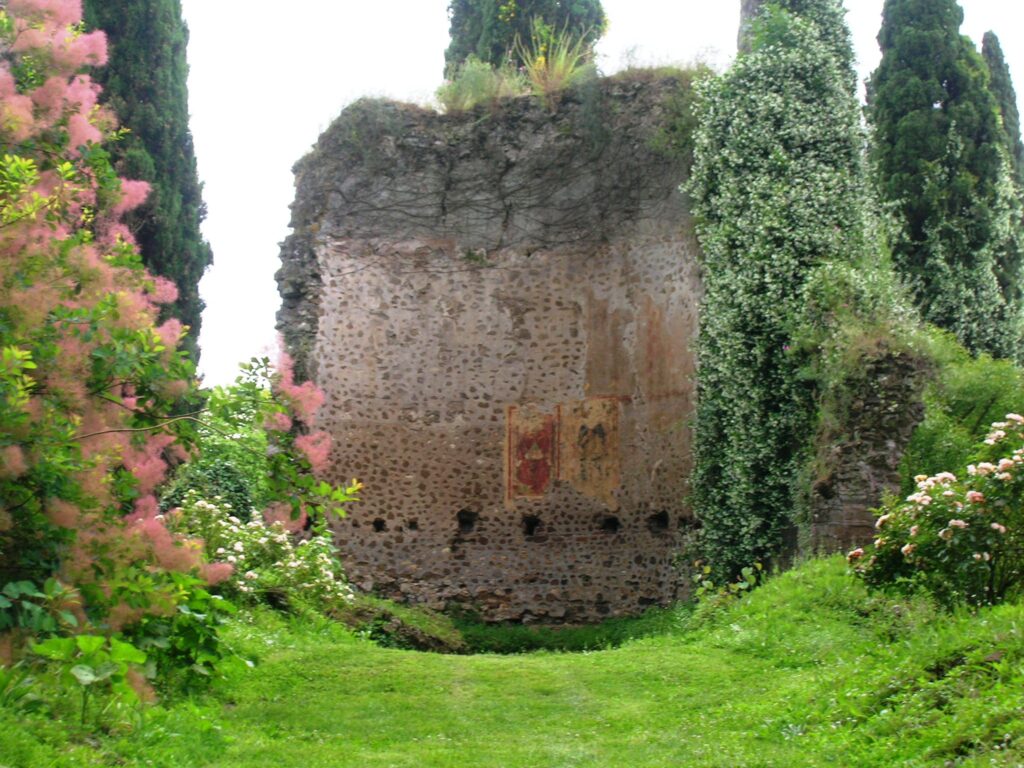
The Romance of Real Ruins
In the 18th and 19th centuries, English landscape designers built faux ruins and artificial follies to evoke the passage of time — but Ninfa is no imitation. Its authenticity gives it a weight and melancholy that can’t be replicated.
As garden historian Todd Longstaffe-Gowan once noted, “You really get a sense of the layers of history. It’s the kind of site the English designers were trying to create when they built fake ruins — but this is real.”
The French landscape architect Michel Benech put it more viscerally:
“It’s a complete atmosphere. When you see the wisteria growing through the stones, you’re scared in some way — it’s probably a good thing to wear a hard hat! But there’s a mixture of abandoned nature and extremely well-kept aspects, too. It’s the kind of garden you would never be able to copy — unless you have your own ruined medieval village.”
That paradox — between decay and design — is the soul of Ninfa. It’s not manicured perfection; it’s the poetry of impermanence.
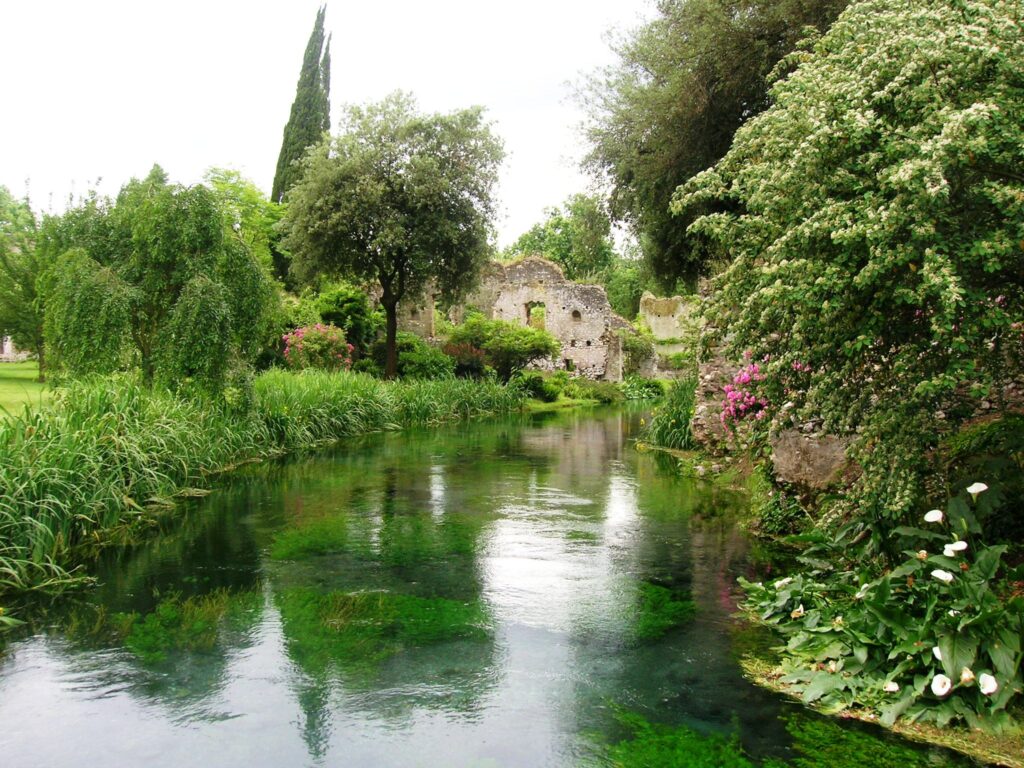
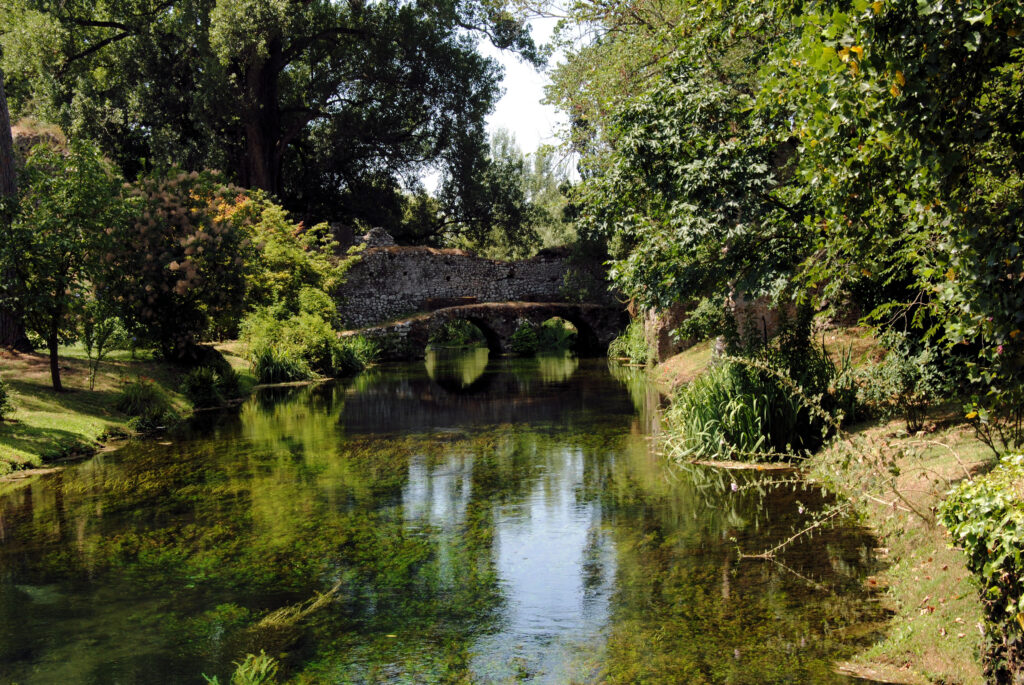
An Ecological Refuge
Since the 1970s, Ninfa has also been recognized as a wildlife sanctuary. Over 150 species of birds migrate through or nest here, taking advantage of the watercourses and dense vegetation. Trout and amphibians thrive in the clear streams, while dragonflies dance above them.
The entire site is managed by the Fondazione Roffredo Caetani, which limits visitors to preserve its fragile ecosystem. Tours are guided and only offered on select days, from spring through autumn.
Planning a Visit
- Location: Via Ninfina, 68, Cisterna di Latina, Lazio, Italy
- Open Days: Generally March through November (weekends and select dates only)
- Tickets: Around €15 per adult, booked in advance via fondazionecaetani.org
- Duration: 60–75 minutes (guided only)
- Getting There: About 64 km south of Rome — take the train to Latina Scalo and a short taxi to the site.
Because of its controlled access, every visit feels private, as though the garden were revealing itself just to you.
Why Giardino di Ninfa Captivates
Ninfa is not a garden of order or grandeur; it’s a garden of emotion. Its beauty lies in the way nature and ruin blend seamlessly — how roses reclaim towers, how reflection pools mirror arches, how the ghosts of history seem to breathe through the foliage.
It embodies something profoundly human: that even in decay, there can be rebirth. That memory and growth, ruin and renewal, are not opposites but continuations of one another.
In that sense, Ninfa isn’t just one of the world’s most beautiful gardens — it’s a meditation on time itself.
Links:
- Soprano Villas Info Page
- Roffredo Caetani Foundation (visiting and tickets)
- Featured Garden: Sissinghurst’s White Garden
